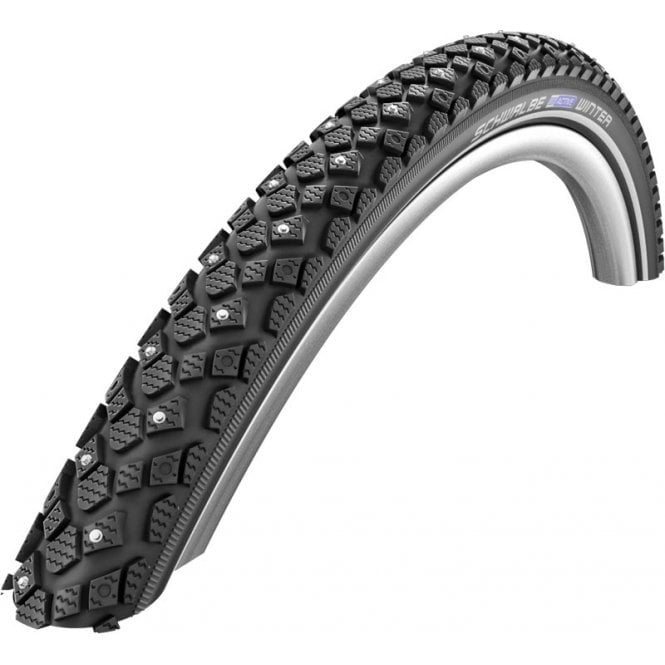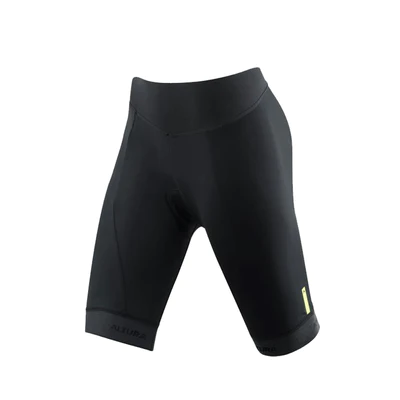Imagine gliding through the snowy streets on your bicycle, the winter air invigorating your senses. But as the temperatures plummet and the roads become icy, the question arises: should you invest in winter tyres for your bike? With safety as a top priority, it becomes essential to evaluate the benefits of winter tyres and the potential risks of navigating wintry conditions without them. While it may require a bit of extra effort and expense, having winter tyres when cycling can provide you with the traction and stability needed to confidently conquer the winter wonderland on two wheels. Let’s explore the reasons why winter tyres are a wise choice for avid winter cyclists.
Table of Contents
ToggleThe Importance of Winter Tyres
When it comes to cycling during the winter months, having the right equipment can make all the difference in ensuring a safe and enjoyable riding experience. One crucial piece of equipment that every winter cyclist should consider is winter tyres. Winter tyres are specifically designed to enhance traction and stability in cold and slippery conditions, providing a reliable grip on the road. In this article, we will explore the various benefits of using winter tyres and discuss the factors to consider when deciding whether to invest in them.
Enhanced Traction and Stability
One of the primary advantages of using winter tyres is the enhanced traction they provide. With their unique tread patterns and rubber compounds, winter tyres are designed to grip the road surface better, even in icy and snowy conditions. This improved traction allows you to maintain better control of your bike, reducing the risk of skidding or sliding. Whether you are climbing a steep hill or maneuvering around sharp turns, the enhanced stability offered by winter tyres can significantly improve your cycling experience during the winter season.
Improved Braking Performance
Winter cycling often entails encountering slippery surfaces, which can make braking a challenging task. However, with winter tyres, you can experience improved braking performance. The specialized rubber compounds in these tyres remain flexible even in low temperatures, ensuring that you can stop your bike safely and effectively. This added stopping power can be critical when navigating icy roads or avoiding unexpected obstacles. By providing reliable braking performance, winter tyres contribute to a safer cycling experience during the winter months.
Reduced Risk of Skidding
Skidding is one of the most significant concerns for cyclists during the winter season. Snow, ice, and wet surfaces can increase the risk of losing control and skidding while cycling. Winter tyres, with their deep grooves and sipes, are designed to channel water and slush away from the tyre’s surface, reducing the likelihood of hydroplaning and skidding. The improved grip on slippery surfaces allows you to maintain better control over your bike and avoid potentially dangerous accidents. With winter tyres, you can feel more confident and secure while cycling in challenging winter conditions.
Enhanced Grip on Icy Surfaces
Icy surfaces pose a unique challenge for cyclists during the winter months. Riding on ice requires maximum traction to prevent slipping and sliding. Winter tyres are specifically designed to excel in such conditions, providing superior grip on icy surfaces. These tyres feature special compounds that can maintain flexibility in extremely low temperatures, allowing them to grip the ice firmly. By choosing winter tyres, you can ride with confidence, knowing that you have the necessary grip to navigate icy roads and pathways safely.
Better Handling in Snowy Conditions
Snow-covered roads can create a whole new set of challenges for cyclists. Without proper traction, riding in snowy conditions can be daunting and dangerous. Winter tyres are specifically designed to handle snowy surfaces, with deep grooves that can grip into the snow, providing better traction and stability. With winter tyres, you can confidently pedal through snow-covered roads, ensuring a smoother ride and reducing the risk of accidents. Embracing winter cycling with the right tyres can open up a whole new world of outdoor adventure and maintain your love for cycling even during the colder months.
Factors to Consider
Before deciding whether to invest in winter tyres for your bike, there are several factors you should take into consideration. These factors can help you evaluate the benefits of winter tyres against your specific needs and cycling habits.
Weather Conditions
The severity of winter weather in your region is a crucial factor to consider when deciding whether to invest in winter tyres. If you live in an area that experiences frequent snowfall, icy conditions, or consistently low temperatures, winter tyres can greatly enhance your cycling experience. On the other hand, if your area sees mild winters with occasional snow or mostly dry conditions, the necessity of winter tyres may be less pronounced.
Frequency of Winter Cycling
Your frequency of winter cycling plays a significant role in determining whether winter tyres are a worthwhile investment for you. If you are a regular winter cyclist who relies on your bike as your primary mode of transportation even during colder months, winter tyres can provide essential safety and performance benefits. However, if you only cycle occasionally during the winter or primarily use alternative forms of transportation, the need for winter tyres may be less pressing.
Terrain and Road Surface
Consider the terrain and road surfaces you typically encounter during your winter cycling. If you frequently ride in hilly areas or on roads with poor maintenance, winter tyres can greatly improve your traction and stability. Additionally, if you often traverse gravel or loose surfaces or utilize bike paths that may not receive proper snow removal, winter tyres can be particularly beneficial in ensuring a smooth and safe ride.
Personal Comfort
Personal comfort is an essential aspect to consider when deciding whether to invest in winter tyres. Some cyclists may feel more confident and secure with the added grip and stability provided by winter tyres. If you have concerns about bike handling in winter conditions or are less experienced in challenging weather, winter tyres can provide peace of mind and enhance your overall comfort while riding.
Cost and Budget
Lastly, it is important to evaluate the cost and budget implications of purchasing winter tyres. Winter tyres can be a significant investment, but they also offer long-term benefits and increased safety. Consider your budgetary constraints and weigh them against the potential cost of accidents or injuries that could occur without proper winter tyres. Additionally, explore alternative options, as there may be cost-effective solutions that still enhance your winter cycling experience.
Weather Conditions
Understanding the specific weather conditions you are likely to encounter during your winter cycling adventures is vital when considering the necessity of winter tyres.
Low Temperatures
One of the primary factors that make winter cycling challenging is the low temperatures. The cold weather can affect tyre performance, reducing grip and overall handling. Winter tyres are designed with unique rubber compounds that remain flexible in low temperatures, ensuring better traction and grip on the road. By investing in winter tyres, you can tackle the cold temperatures with confidence, knowing that your tyres will provide optimal performance.
Snowfall and Ice
Snow and ice are common occurrences during the winter season, and they can cause treacherous road conditions for cyclists. Winter tyres excel at gripping onto snowy and icy surfaces due to their special tread patterns and compounds. These tyres are equipped with deep grooves and sipes that channel away snow and enhance traction, reducing the risk of skidding or sliding. With winter tyres, you can ride through snow-covered roads and icy patches with increased safety and stability.
Wet and Slushy Conditions
In addition to snow and ice, wet and slushy conditions are prevalent during winter. Without proper grip, these conditions can make cycling hazardous. Winter tyres are designed to disperse water and slush away from the tyre’s surface, allowing for better contact with the road. The enhanced traction of winter tyres ensures that you can maintain control and maneuver safely through wet and slushy conditions.
Frequent Weather Changes
Winter weather conditions are often unpredictable, with frequent changes between snow, rain, and freezing temperatures. These weather fluctuations can pose significant challenges for cyclists. By equipping your bike with winter tyres, you can be prepared to handle various weather conditions. Winter tyres provide the necessary stability and grip in a wide range of winter weather, allowing you to adapt quickly to changing conditions and enjoy uninterrupted cycling throughout the season.
Frequency of Winter Cycling
The frequency with which you cycle during the winter months is an important consideration when debating whether to use winter tyres.
Regular Winter Cyclists
If you are a dedicated winter cyclist who relies on your bike as your primary mode of transportation, investing in winter tyres is highly recommended. Regular cyclists are likely to encounter a variety of winter weather conditions, and the enhanced traction and stability provided by winter tyres can greatly improve safety and performance. By equipping your bike with winter tyres, you can confidently navigate through the winter landscape and maintain your cycling routine without compromising on safety or comfort.
Occasional Winter Cyclists
If you only cycle occasionally during the winter, the necessity of winter tyres may be less pronounced. However, it is important to consider the specific weather conditions you may encounter during your rides. Even if you ride infrequently, snowy or icy conditions can still pose a significant risk. If you anticipate encountering such conditions, investing in winter tyres can provide added safety and peace of mind during your occasional winter rides.
Commuters
Commuters who rely on their bikes to travel to and from work or other destinations during the winter should seriously consider using winter tyres. As a commuter, you are likely to encounter a variety of weather conditions and road surfaces. Winter tyres can enhance your grip, stability, and overall safety during these daily commutes, ensuring a reliable and comfortable ride. By opting for winter tyres, you can ensure that commuting by bike remains a viable and enjoyable option throughout the winter months.
Terrain and Road Surface
Considering the terrain and road surfaces you typically encounter during your winter cycling adventures is crucial when determining whether winter tyres are necessary.
Hilly Areas
If you regularly cycle in hilly areas during the winter, winter tyres can significantly enhance your riding experience. The improved traction and stability provided by winter tyres can assist in climbing steep hills with confidence. Additionally, when descending hills, winter tyres can provide reliable braking performance, ensuring a safe and controlled ride. If your winter cycling routes include hilly terrain, winter tyres are a valuable investment to enhance your safety and enjoyment.
Unmaintained Roads
Unmaintained roads are common during the winter season, particularly in rural areas. These roads often present challenges such as uneven surfaces, debris, and limited snow removal. Winter tyres, with their special tread patterns, can handle these road conditions with ease. The deep grooves and sipes in winter tyres provide better grip on uneven surfaces, ensuring a smooth and stable ride. If you frequently traverse unmaintained roads during the winter, investing in winter tyres is highly recommended.
Gravel or Loose Surface
If a significant portion of your winter cycling route consists of gravel or loose surfaces, winter tyres can greatly improve your riding experience. Gravel can be particularly challenging to navigate, especially in winter conditions. Winter tyres are designed with the necessary tread patterns to grip into loose surfaces, providing excellent traction and stability. By equipping your bike with winter tyres, you can confidently explore gravel roads and paths, enjoying a smoother and safer ride.
Bike Paths
Bike paths may not receive the same level of snow removal as main roads, making them potentially hazardous for cyclists during the winter. If you primarily use bike paths for your winter cycling, it is essential to consider the condition of these paths during colder months. Winter tyres can greatly enhance your safety and riding experience on bike paths. With their improved grip and stability, winter tyres allow you to tackle potentially icy or snowy bike paths with confidence.
Personal Comfort
Personal comfort is an important factor to consider when deciding whether to invest in winter tyres. Your comfort level while riding greatly affects your overall enjoyment and confidence on the bike.
Confidence in Bike Handling
For some cyclists, winter conditions can be intimidating, particularly when it comes to bike handling. If you feel less confident in your ability to navigate slippery surfaces or adverse weather, winter tyres can provide the necessary reassurance. Knowing that your tyres are designed to handle winter conditions can boost your confidence and allow you to enjoy your rides to the fullest. With winter tyres, you can confidently tackle challenging weather, knowing that your bike will handle well throughout the ride.
Safety Concerns
Safety should always be a top priority for cyclists, and winter conditions can add an extra layer of risk. If you have concerns about safety while cycling in winter, investing in winter tyres can mitigate some of these risks. The enhanced traction, stability, and braking performance of winter tyres contribute to a safer riding experience, reducing the likelihood of accidents or skids. By prioritizing safety and equipping your bike with winter tyres, you can ride with peace of mind, knowing that you have taken steps to protect yourself on the road.
Ability to Adapt to Changing Conditions
One of the challenges of winter cycling is the rapid changes in weather conditions. Winter tyres allow you to adapt to these changes without compromising on performance or safety. Whether you encounter a sudden snowstorm or a freezing rain shower, winter tyres provide the necessary grip and stability to handle the fluctuating road conditions. By equipping your bike with winter tyres, you can adapt seamlessly to changing conditions and continue enjoying your rides throughout the winter season.
Cost and Budget
Considering the cost and budget implications is an essential step when deciding whether to invest in winter tyres for your bike.
Price of Winter Tyres
Winter tyres can be more expensive compared to standard tyres, primarily due to the specialized features and rubber compounds they incorporate. The cost of winter tyres can vary based on the brand, quality, and size of the tyres. It is important to research and compare different options to find the best value for your budget. While winter tyres may require a larger upfront investment, the long-term benefits they offer in terms of safety and performance can outweigh the initial cost.
Long-Term Investment
When evaluating the cost of winter tyres, consider them as a long-term investment in your cycling safety and enjoyment. Winter tyres can extend the usability of your bike throughout the winter months, ensuring that you can continue cycling even in challenging conditions. By investing in winter tyres, you are prioritizing your safety and taking proactive measures to enhance your riding experience during the winter. When viewed as a long-term investment, the cost of winter tyres becomes more justifiable, as it contributes to your overall cycling satisfaction.
Alternative Solutions
If the cost of winter tyres is a concern, exploring alternative solutions can be beneficial. While winter tyres offer the optimal performance for winter cycling, there are other options available that can provide some level of grip and stability. Snow chains, studded tyres, and tyre liners are alternative solutions that can enhance traction in winter conditions. These options may be more affordable and can be suitable depending on your specific needs and budget. However, it is important to note that these alternatives may not provide the same level of performance as dedicated winter tyres.
Cost of Accidents or Injuries
Lastly, it is important to consider the potential cost of accidents or injuries that may occur without proper winter tyres. Skidding or losing control on slippery surfaces can lead to significant injuries and bike damage. The cost of medical bills, bike repairs, or even a replacement bike can far exceed the cost of investing in winter tyres. By prioritizing safety and equipping your bike with winter tyres, you can mitigate the risk of accidents and the associated costs, ensuring a safer and more enjoyable winter cycling experience.
Benefits of Using Winter Tyres
Using winter tyres for your winter cycling provides numerous benefits that can greatly enhance your overall riding experience.
Increased Safety
Safety is paramount when it comes to winter cycling, and winter tyres offer a significant boost in safety. With their advanced tread patterns and rubber compounds, winter tyres provide improved traction, stability, and braking performance. These features reduce the risk of accidents and skidding, allowing you to cycle with confidence even in challenging weather conditions. By prioritizing safety through the use of winter tyres, you can enjoy the winter season on your bike while minimizing potential risks.
Reduced Traction Issues
Traction issues are a common concern for cyclists during the winter months. Slippery surfaces, such as ice or wet roads, can compromise your grip and control. Winter tyres are specifically designed to address these traction issues, providing optimal grip and stability. By using winter tyres, you can confidently tackle slippery surfaces, knowing that your tyres will maintain excellent traction and maximize your safety while cycling.
Comfortable Riding Experience
Cycling during the winter can be uncomfortable without the proper equipment. Winter tyres offer a more comfortable riding experience by providing enhanced grip and stability. With the added control and confidence offered by winter tyres, you can navigate winter roads and surfaces with ease. Winter tyres absorb vibrations more effectively and offer a smoother ride even on uneven or snowy surfaces. By investing in winter tyres, you can ensure a comfortable and enjoyable cycling experience throughout the winter months.
Enhanced Confidence
Winter conditions can sometimes be intimidating for cyclists. Reduced visibility, slippery surfaces, and unpredictable weather can erode confidence. Winter tyres can act as a confidence booster, allowing you to tackle adverse conditions with greater assurance. The improved traction and stability provided by winter tyres instill confidence, encouraging you to explore new routes and push your cycling boundaries. By riding with confidence, you can fully embrace the joys of winter cycling and make the most of the season.
Drawbacks of Using Winter Tyres
While winter tyres offer significant advantages, it is important to consider their drawbacks as well.
Additional Cost
One of the primary drawbacks of using winter tyres is the additional cost involved. Winter tyres can be more expensive than standard tyres, primarily due to their specialized features and rubber compounds. The initial investment required for winter tyres may be a deterrent for some cyclists. However, it is important to weigh this cost against the long-term benefits and potential costs of accidents or injuries that may occur without proper winter tyres.
Limited Usability in Non-Winter Conditions
Winter tyres are designed specifically for cold and slippery conditions, making them less effective in non-winter conditions. Once the winter season ends, you may need to switch back to regular tyres to optimize performance. This transition can be time-consuming and may require an additional investment in tire changing or storage. If you live in an area with mild winters or experience more non-winter riding, the limited usability of winter tyres outside of the colder months may be a drawback to consider.
Increased Rolling Resistance
Due to their unique tread patterns and robust construction, winter tyres often result in increased rolling resistance compared to standard tyres. This increased resistance may require more energy and effort to pedal, potentially affecting your overall cycling performance. However, the enhanced grip and safety provided by winter tyres often outweigh this drawback for most winter cyclists. It is worth considering individual performance goals and priorities when assessing the impact of increased rolling resistance.
Maintenance and Storage
Winter tyres require proper maintenance and storage when not in use during the off-season. Storing the tyres in a dry and cool environment is essential to preserve their performance and longevity. Additionally, periodically inspecting the tyres for wear and tear is necessary to ensure they remain in optimal condition. While regular maintenance and storage are necessary for all tyres, the added requirement for winter tyres may be an additional consideration for some cyclists.
Alternative Options
While winter tyres are the most effective solution for winter cycling, there are alternative options available for those who may not want to invest in dedicated winter tyres.
Snow Chains
Snow chains are an alternative solution to enhance traction when cycling on snowy or icy surfaces. Similar to how they are used for cars, snow chains can be wrapped around the tyre to provide better grip. They can be a more affordable option compared to winter tyres but may not offer the same level of performance. Snow chains can be particularly useful for occasional winter cyclists or those who primarily encounter snowy conditions.
Studded Tyres
Studded tyres feature metal studs embedded in the tyre’s tread, providing additional grip on icy surfaces. These tyres offer enhanced traction and stability, making them suitable for icy roads or extreme winter conditions. However, studded tyres can be more expensive than winter tyres and may result in increased rolling resistance. They are not recommended for use on dry or clear roads as the metal studs can cause damage or excessive wear.
Tire Liners
Tire liners are protective layers that can be added inside the tyre to prevent punctures and help improve grip. While tire liners are not specifically designed for winter conditions, they can provide added security and durability when riding in hazardous winter environments. Tire liners are generally more affordable than dedicated winter tyres but may not provide the same level of grip and stability.
Anti-Slip Devices
Anti-slip devices, such as adhesive pads or sprays, can be applied to standard tyres to improve grip on slippery surfaces. These devices offer a cost-effective alternative to winter tyres, but their effectiveness may vary depending on the specific brand and application method. Anti-slip devices can provide some level of traction enhancement, making them suitable for occasional winter cyclists or those who encounter limited winter weather conditions.
In conclusion, the decision to invest in winter tyres for your bike ultimately depends on a variety of factors, including the weather conditions in your region, the frequency of your winter cycling, and your personal comfort level. The benefits of using winter tyres, such as increased safety, improved traction, and a comfortable riding experience, make them highly recommended for regular winter cyclists or those who rely on their bike for daily transportation. However, if winter conditions are mild or you primarily cycle occasionally, exploring alternative options or evaluating their necessity may be more appropriate. Regardless of your decision, prioritizing safety and taking proactive measures to enhance your riding experience during the winter season should always be of paramount importance.







